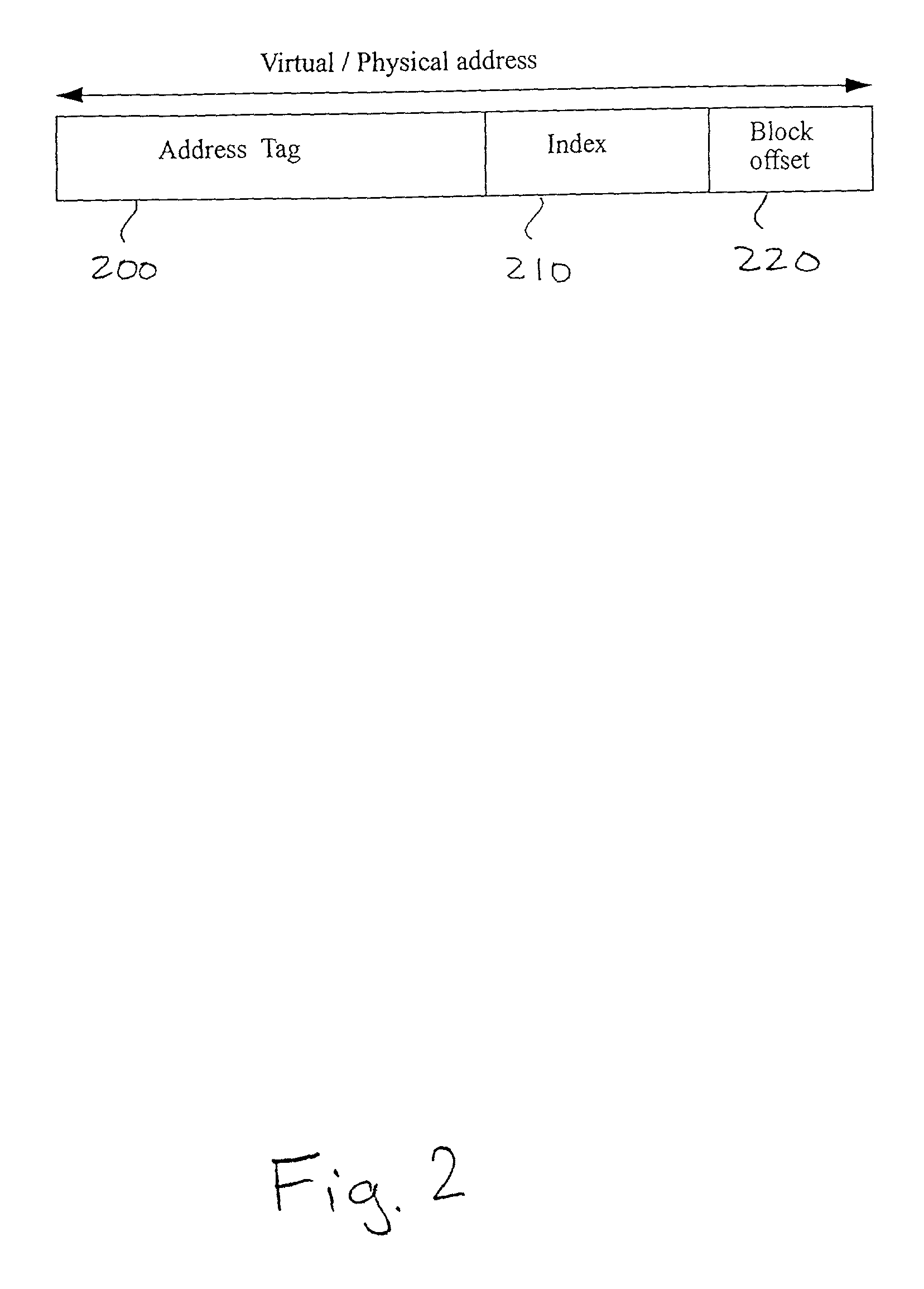Method and system for compression of address tags in memory structures
a memory structure and address tag technology, applied in the field of computer systems, can solve the problems of affecting the cost factor of processing units, requiring sophisticated cooling techniques, and low yield
- Summary
- Abstract
- Description
- Claims
- Application Information
AI Technical Summary
Benefits of technology
Problems solved by technology
Method used
Image
Examples
Embodiment Construction
)
[0025] The present invention is directed to a method and system for compressing address tags in memory structures of a computer. By compressing the address tags, fewer bits are required for storage, and for searching or hit / miss comparison. The memory structures can thus be reduced in size, and operate with less power.
[0026] One exemplary memory structure in which the invention may be embodied is a cache. As explained in the Background section, caches generally have two arrays: the actual values or cache entries, and the address tags or directory. For a 64-kilobyte (KB), direct-mapped data cache that is virtually indexed and virtually tagged, which uses 32-bit virtual addressing, and a block size of four bytes, the total size of a typical prior art cache is 98 KB, including the cache directory (and validity bits). The tags occupy 34 KB, or about 50% of the size of the cache entry array. Though this percentage may be reduced with larger block sizes, it nevertheless constitutes a sig...
PUM
 Login to View More
Login to View More Abstract
Description
Claims
Application Information
 Login to View More
Login to View More - R&D
- Intellectual Property
- Life Sciences
- Materials
- Tech Scout
- Unparalleled Data Quality
- Higher Quality Content
- 60% Fewer Hallucinations
Browse by: Latest US Patents, China's latest patents, Technical Efficacy Thesaurus, Application Domain, Technology Topic, Popular Technical Reports.
© 2025 PatSnap. All rights reserved.Legal|Privacy policy|Modern Slavery Act Transparency Statement|Sitemap|About US| Contact US: help@patsnap.com



